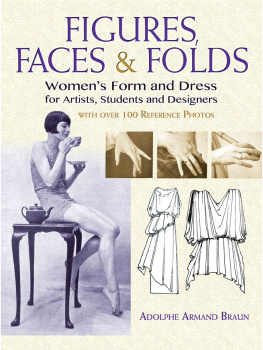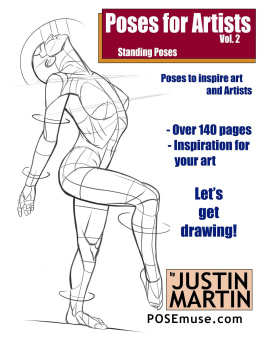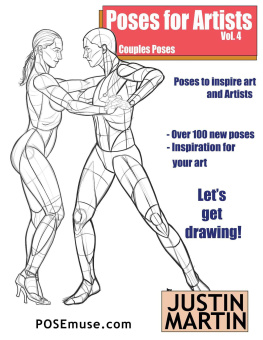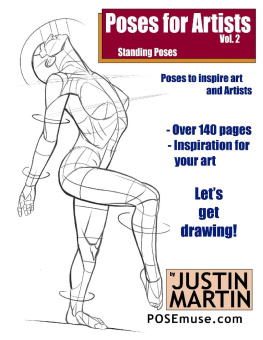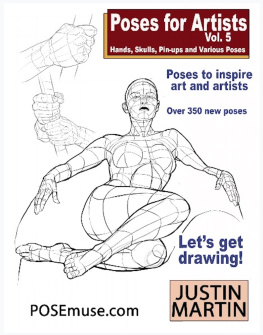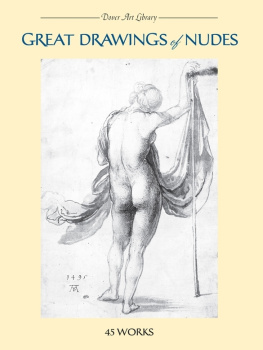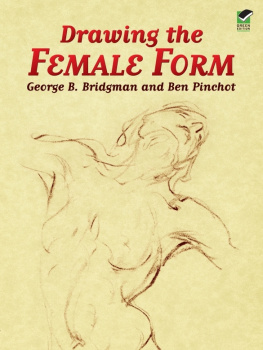FIGURES, FACES & FOLDS

Frontispiece

Venus, by TITIAN.
FIGURES, FACES & FOLDS
Womens Form and Dress
for Artists, Students and Designers
ADOLPHE ARMAND BRAUN
DOVER PUBLICATIONS, INC.
Mineola, New York
Bibliographical Note
This Dover edition, first published in 2017, is an unabridged republication of the work originally published by Bridgman Publishers, Inc., Pelham, New York, in 1928.
Names: Braun, Adolphe Armand, 1869author.
Title: Figures, faces & folds: womens form and dress for artists, students and designers / Adolphe Armand Braun.
Other titles: Figures, faces and folds
Description: Mineola, New York: Dover Publications, 2017. | This Dover edition, first published in 2017, is an unabridged republication of the work originally published by Bridgman Publishers, Inc., Pelham, New York, in 1928.
Identifiers: LCCN 2016043660| ISBN 9780486815923 (paperback) | ISBN 0486815927
Subjects: LCSH: Human figure in art. | Women in art. | Drapery in art. | Clothing and dress in art. | BISAC: ART / Techniques / Life Drawing.
Classification: LCC NC765 .B74 2017 | DDC 700/.4561dc23 LC record available at https://lccn.loc.gov/2016043660
Manufactured in the United States by LSC Communications
81592701 2017
www.doverpublications.com
PREFACE
T HE object of this work is to provide a reference-work and compendium useful for art-workers of every kind who, in the ordinary course of their practice, employ the human figure, with or without its costume and drapery, for purposes of commercial art, illustration, fashion drawing, dress design, and the like. In the series of Standard Poses (114 in number) I have attempted to present as complete a collection as possible of the more graceful attitudes into which the female form naturally falls, graded according to standing, reclining, kneeling, sitting, and various action poses. At the same time it has been my endeavour to correlate with these the underlying principles of dress design and construction, and to show the fundamental poses which the female form assumes in wearing stately or beautiful garments.
The Standard Poses have been carefully planned to be of the greatest practical value possible to artists of all sorts, and my models have been chosen with equal care to express what is at the present day considered most beautiful in the types of the female figure. Every century has had its ideals and its type in this respect, as a glance at the Historical plates will show, and it has been my aim in producing the series to typify in form, pose, and gesture, the naturally graceful woman of the present day.
In compiling the series of Historical plates I have been at pains to select from the work of great artists and sculptors, from ancient times to the close of the nineteenth century, a series of examples of diverse periods, and schools to demonstrate not only the fairest types of these periods but also correlate them with the contemporary ideas of dress, and show the poses which such dress types evolved. I deal first with full-length figures, after which comes a study of faces graded according to full-face, three-quarter, and profile views, followed by a series of drapery examples. It is to be hoped that much will be gained from the study of these, as from the treatment of hands, draperies, anatomy, and the like which the examples reveal, as do the Standard Poses that follow.
The letterpress includes sections in Drawing the Figure and Face, Drapery, the Principles and Construction of Dress Forms, Practical Anatomy with special reference to the Poses, Notes on the Poses, etc. For the benefit of students and others, I have included a series of plates of large-scale features to show the construction of Shoulders, Necks, Torsos, Thighs, Legs, Feet, etc., and their response to movement. I have also dealt fully with Hands (including Gloves) perhaps the most difficult of all to draw.
It is my hope that my work on this book has produced something not without originality and interest, expressing the trend of my ideas since the publication of my Hieroglyphic or Greek Method of Life Drawing, to which the present volume may be considered as a sequel and companion. In that work I sought to identify the main principles of Anatomy as it concerned Artists, and to incorporate them in a system of Life Drawing. In the present work I go a step further and treat with the natural attitudes of the female form, the principles underlying its clothing, and its response to the wearing of beautiful attire. If I have been in any way successful in achieving these objects, or even in revealing to the artist something additional of the beauty of the human form and its artistic presentation, I shall feel satisfied.
Finally, I must express my thanks to those artists and experts who have given me the benefit of their advice in preparing this book, and collaborated in the production of the drawings and various of the letterpress sections. Although I have not always shared their opinions, I have carefully thought them over, and utilized them as far as was compatible with my scheme, and I am duly grateful for the help I have received from these competent hands. To the collaboration of my models I wish to give particular praise and thanks. Their keenness and enthusiasm have been of inestimable aid and service in the preparation of the photographic poses.
LONDON, November 1928. A. A. B.
CONTENTS

The Reader, by FRAGONARD.
FIGURES, FACES, AND FOLDS
INTRODUCTION
W E are accustomed to assign to every period in history its own type of beautiful woman, and in determining this type we are largely swayed by the works of great artists of the particular epoch. When, for instance, we think of the Ancient Greeks, our imagination instantly conjures up some Pheidian or Praxitelian type, dignified, perfectly proportioned and athletic, classic in its purity of feature and attitude; or in the same way for the seventeenth century a divergent type comes to mind, that perpetuated in the art of Rubens and his school, healthy and full-blooded, firm of flesh, generous of limb, and indolent of movement. To speak of a Botticelli or a Titian face has become a commonplace. All of these types live for us in our minds eye, and reviewing them we can assign to each its characteristic attitudes, gestures, expression, carriage, and so on.
So, in the same way, does the mode of attire synchronize in each case, and just as the favoured type alters, so does Fashion change and vary. We can contrast the exquisite beauty and suitability of the Greek tunic with the stately flowing lines of Mediaeval robes. These in turn give way to the conceits of hooped skirts, laced-in waists, farthingales, crinolines, and bustles, till we find in the twentieth century a marked tendency towards a reversion to simpler forms and more fundamental principles in feminine fashions. It is to be hoped that some future generation will evolve an attire as graceful, hygienic, and perfectly fitted for usage as that of the Golden Age in Greece.
Fashion is notoriously fickle and liable to sudden change. Nature knows no change but the slow steady march of evolution, in which a thousand years are accounted as so many seconds. Infinite as are the variations of the human bodyone tall of stature where another is short, one fair of skin when another is dark, one so much more perfectly formed and proportioned than anotheryet all are built on the same logical plan, all are wrought by Nature to fulfil her scheme to the highest degree. The human form is in every case endowed with a rhythm and harmony and constructed with a masterly logic which the artist must seek perfectly to understand before he presumes to set his hand to interpret its beauty.

